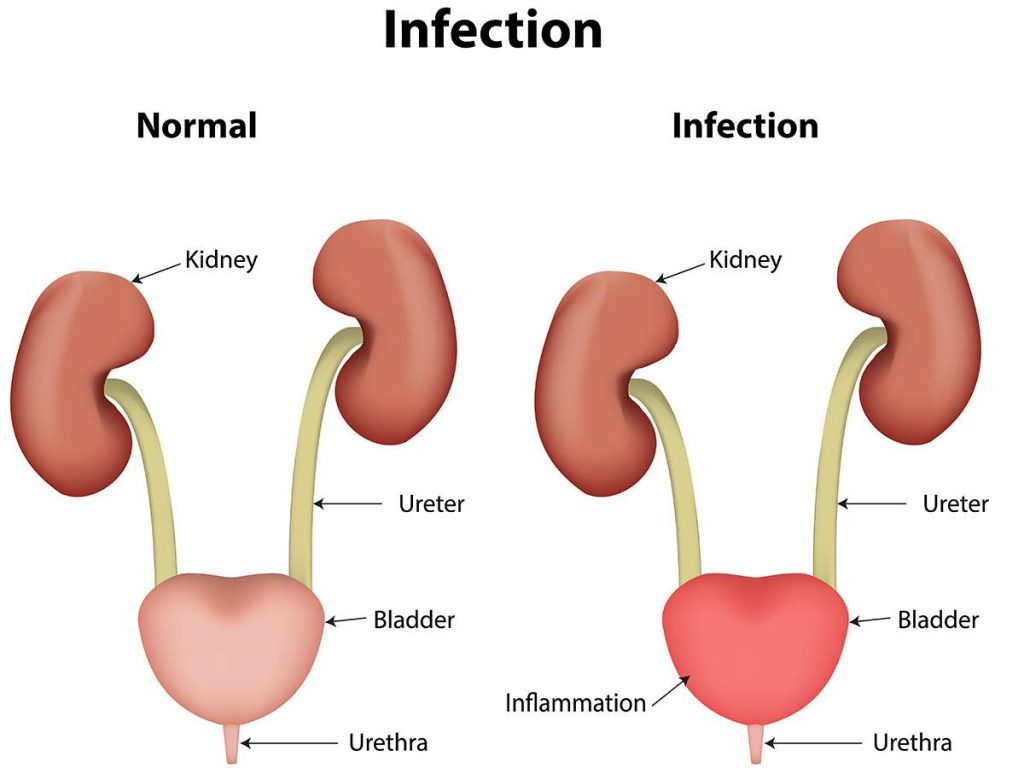Have you felt a sudden pain around your vagina or penile area while peeing? Does your pee smell unusual? If the issue persists, you may want to get yourself checked for urinary tract infections.[1]

What is a urinary tract infection?
Urinary tract infection is an infection caused due to the increase of microbes. The microbes are tiny, thereby making it hard to detect. The majority of urinary tract infection is caused due to the infestation of bacteria. However, some happen due to viruses and fungi.[2] As per reports, this is one of the most common infections affecting human beings.
A 2013 study showed that around 50-60% of women are prone to urinary tract infections in their lifetime.
As the name suggests, the urinary tract infection affects the urinary tract and can infect any part, such as ureters, bladder, kidney, or urethra.[3] Urinary tract infection usually has severe impacts on the lower tracts such as urethra and bladder. As far as upper area infection is concerned, it only affects the ureters and kidneys. Upper tract UTIs are far more severe than the lower tract UTIs, but at the same time, it is very rare too.[4]
What are the symptoms of UTI?
Both men and women are severely impacted due to UTI. Some of the prominent symptoms of UTI include the following.
- Burning sensation while urinating
- Cloudy or bloody urine
- Pelvic pain (women)
- Rectal pain (men)
- The unusual color of urine
- Frequent urination
- The urgency in urination without much urinating
The ones mentioned above were the symptoms of lower tract UTI. The symptoms of upper tract UTI may vary from that of the lower tract UTI.[5] Some of the symptoms of upper tract UTI include the following
- Chills
- Fever
- Vomiting
- Nausea
- Tenderness and pain around the upper back and sides
As said above, both men and women suffer severely due to UTI. Both of them have almost common symptoms, with the only difference being in terms of rectal pain for men and pelvic pain for women.
Diagnosis
The diagnosis of the disease is only conducted after checking for visible symptoms.[6] The doctor may carry out a urine cell to check for the presence of bacteria, red blood cells, and white blood cells accordingly.
The urine collection for UTI is very much different from general methods as it uses the clean-catch technique. The genital area is washed off regularly, and the urine is collected mid-flow. This lowers the risk of bacteria infestation in the urine.
If the person is tested positive for UTI, the doctor may carry out further tests for confirmation. These tests would be conducted to check for functional or anatomical issues. Some of the prominent tests that may be conducted include the following.[7]
Urodynamics: This test helps to conduct the storage and release of urine.
Diagnostic Imaging: In this case, the doctor may recommend an ultrasound, MRI scanning, radiation tracking, X-rays, and CT scanning.
Cystoscopy: The doctor may examine the bladder and urethra using a camera lens using the long thin tube for extra advantages.[8]

UTI in Men
Significantly fewer men suffer from UTI. As per the reports, every 5-8 men above the age of 50 among 10,000 men suffer from the risk of infection.[9] Older men are more prone to infection than younger men.
UTI in men affects the same organ like that of women. However, men are at an increased risk of developing prostate cancer if they develop UTI.
Men with a circumcised penis are less prone to the infection. The treatment method is the same as that of women with UTI.
Treatment
If the UTI is caused due to normal bacteria, it can be easily treated using antimicrobials and antibiotics. However, the doctor will prescribe you a medication depending on the severity of the condition.
The doctor may further conduct a full examination to check if the infection is clear or not. This is also done to ensure the lesser risk of antibiotic resistance. Most of the time, the disease’s symptoms may be gone before the disease’s disappearance.
Frequent urination and drinking lots of fluid can be one of the most effective ways to flush out the bacteria easily.[10] Since it can be painful, the doctor may prescribe over-the-counter medicines or analgesics to ease the pain. A heating pad around the abdomen can also be one of the best ways to treat the problem.
Most people may develop serious UTIs due to an underlying condition. In such situations, the root cause of the problem is detected and completely flushed out. The underlying conditions may also increase the risk of kidney damage.[11]
The lack of fluids can further complicate the problems for people with UTI. The doctor may prescribe fluids and medications, depending on the condition. Since pregnant women are also at a high risk of infection, they may be sent to the hospital to prevent a child’s risk.
Home Remedies
People with mild UTI can easily get themselves treated at home too.[12] As suggested, drinking lots of fluid, especially water and urinating frequently, can be one of the best ways to ward off the bacterial infection.
Cranberry and its extracts have also been said to help relax the symptoms of bacteria. The cranberry extracts are available in tablet forms as well that can be purchased online. Nevertheless, you should consult your doctor before the consumption of these tablets.
UTI can be risky if not taken seriously in the initial periods only.[13] Slight changes in medication and lifestyle can be of great help for preventing the bacterial infection from being life-threatening.
[1] https://www.ncbi.nlm.nih.gov/pmc/articles/PMC4457377/
[2] Stamm WE, Norrby SR. Urinary tract infections: disease panorama and challenges. J Infect Dis. 2001;183 (Suppl 1):S1–S4. [PubMed] [Google Scholar]
[3] https://www.ncbi.nlm.nih.gov/pmc/articles/PMC5027397/
[4] https://www.ncbi.nlm.nih.gov/pmc/articles/PMC5159206/
[5] Foxman B. The epidemiology of urinary tract infection. Nature Rev Urol. 2010;7:653–660. [PubMed] [Google Scholar]
[6] Hooton TM. Uncomplicated urinary tract infection. New Engl J Med. 2012;366:1028–1037. [PubMed] [Google Scholar]
[7] https://www.ncbi.nlm.nih.gov/books/NBK470195/
[8] https://www.ncbi.nlm.nih.gov/books/NBK436013/
[9] Lichtenberger P, Hooton TM. Complicated urinary tract infections. Curr Infect Dis Rep. 2008;10:499–504. [PubMed] [Google Scholar]
[10] https://www.ncbi.nlm.nih.gov/pmc/articles/PMC2875701/
[11] Ronald A. The etiology of urinary tract infection: traditional and emerging pathogens. Am J Med. 2002;113 (Suppl 1A):14S–19S. [PubMed] [Google Scholar]
[12] Wright KJ, Hultgren SJ. Sticky fibers and uropathogenesis: bacterial adhesins in the urinary tract. Future Microbiol. 2006;1:75–87. [PubMed] [Google Scholar]

